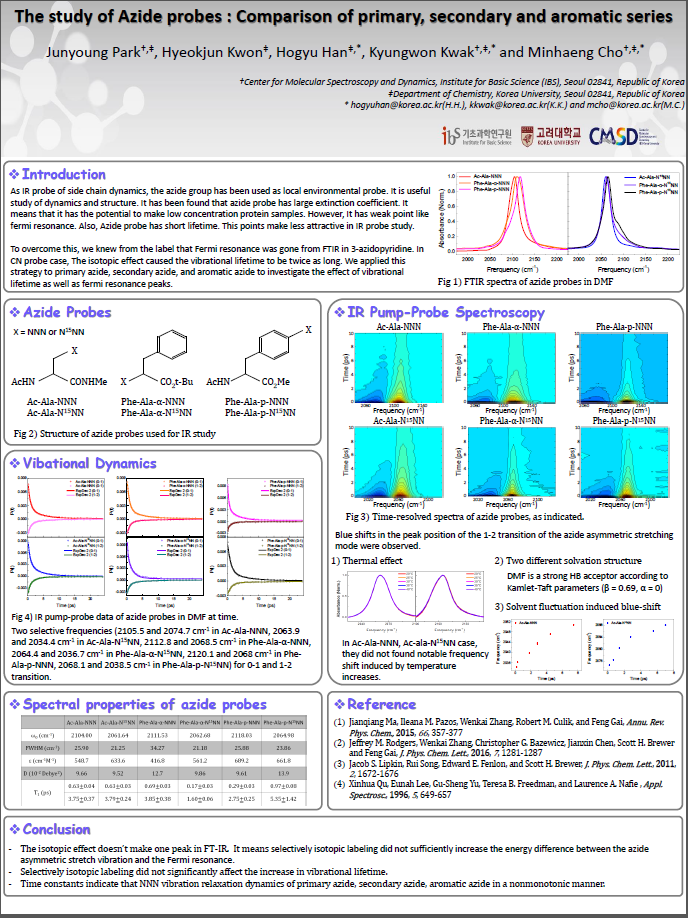mainmenu
The study of Azide probes : Comparison of primary, secondary and aromatic series
2018 121st KCS General Meeting

As IR probe of side chain dynamics, the azide group has been used as local environmental probe. It is useful study of dynamics and structure. It has been found that azide probe has large extinction coefficient. It means that it has the potential to make low concentration protein samples. However, It has weak point like fermi resonance. Also, Azide probe has short lifetime. This points make less attractive in IR probe study. In this paper[1], Selectively isotopic labeling lead to increase the energy difference between the azide asymmetric stretch vibration and the Fermi resonance. Prof. Han’s group developed selective β-position synthesis of 15N labeled aliphatic azide compounds. We experiments on primary, secondary and aromatic azide samples. In DMF, vibrational lifetime of azide derivatives, (1) Ac-Ala-NNN (2) Ac-Ala-N15NN (3) Phe-Ala-α-NNN (4) Phe-Ala-α-N15NN (5) Phe-Ala-p-NNN (6) Phe-Ala-p-N15NN, are determined to be (1) 3.75 ± 0.37 ps (2) 3.78 ± 0.24 ps (3) 3.85 ± 0.38 ps (4) 2.53 ± 0.21 (5) 2.75 ± 0.25 ps (6) 5.33 ± 1.41 ps. We find that vibrational relaxation dynamics of azides probe in a nonmonotonic manner. In particular, the longer vibrational lifetime of Phe-Ala-p-N15NN makes it more useful IR probe at 2D IR measurements. It means larger signals at longer time scale. However, In 2D IR measurement, Phe-Ala-p-N15NN has fermi resonance. The study demonstrates the use of isotropic azide probe to measure side chain dynamics also need to consider the other factors such as life time, fermi resonance in 2D IR probes for studying proteins.


